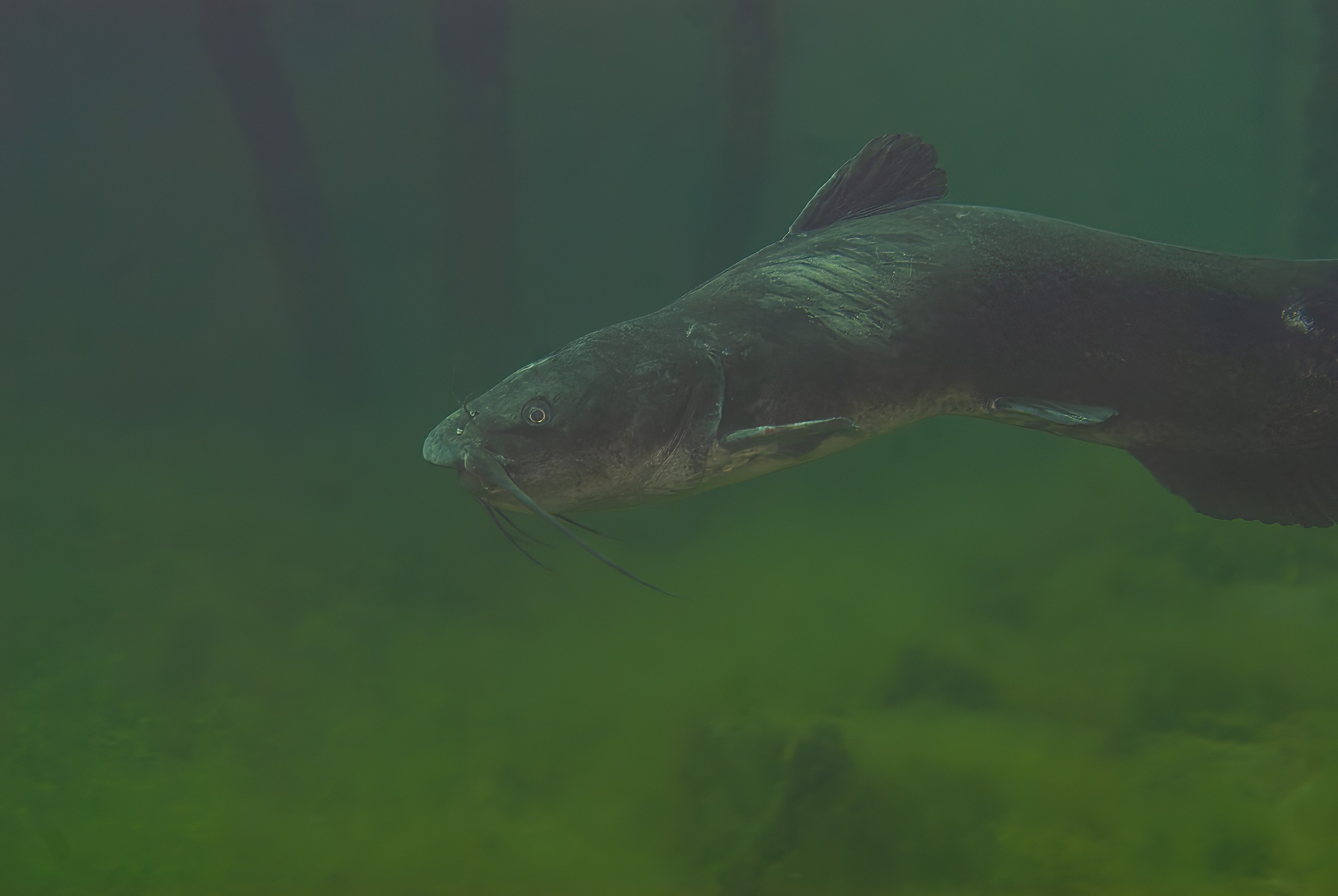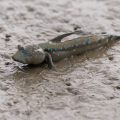Every fish needs to adapt to its surroundings, and that is done through centuries of mutation and evolution. One such fish is the catfish, which has adapted to its freshwater habitat through various features that allow it to survive in freshwater. Freshwater catfish have whiskers, barbels, and other features like stinging spines like channel catfish. These features help the catfish look for food and evade predators, two essential survival tactics.

What features of catfish adapt to freshwater?
The three primary features that all fish need are sight, smell, and taste. If a fish has these three necessities, it can survive in freshwater. All fish have different ways of using these senses based on which part of the habitat they occupy and the type of fish that it is.
It is important to remember that tons of different catfish species inhabit almost all parts of the world. These fish have tons of freshwater catfish, saltwater, and brackish water. Not all freshwater catfish will have the same features, even if they live in similar habitats.
For catfish, here are some basic adaptive behaviors that help the fish survive in freshwater.
Large eyes
There are many freshwater catfish; one of the most popular ones is channel catfish, but there are also other fish like blue catfish, flathead catfish, and wels catfish. Most of the catfish in freshwater do have a very good sense of smell compared to other fish out there. Their sense of smell is why stink baits are used when fishing for them.
However, what they do need is a sense of sight, and a lot of freshwater catfish have larger eyes compared to other fish. This helps them see more clearly. There are some misconceptions that catfish cannot see, but scientists have found that the fish has excellent sight and can even see the shadow of approaching fish and have learned to fear them.
Their large eyes help them escape from any oncoming prey but also help them locate food that might be pretty far away and catch it. No matter how bad the environment is, the catfish can still use its eyes to guide it. Therefore, there are many uses for the sense of sight for the catfish, even if it might not seem like it.
Barbels
Barbels are a significant feature that every species of catfish has. They are one reason for the fish’s name: the barbels look like whiskers. These are on the sides of the fish’s face and chin. There are many functions that these barbels serve that have helped the fish in adapting to its freshwater environment. Most of the senses that the catfish have are concentrated onto their barbels. This includes the taste buds mainly but also other sensory receptors. Therefore, the primary function is to detect food in short.
The catfish can use its barbels to look for prey, as these barbels act as sensors that scan their nearby environment to see if there is prey nearby and to get to know their environment. These barbels are also essential to taste the water, allowing the catfish to determine if something is edible. This is important for bottom-dwelling catfish species that feed on various organisms, including insects, crustaceans, and other fish.
Another great feature of the barbels is that they help them navigate the environment. Now we know that the fish has excellent eyesight, but the fish also lives in muddy environments where eyesight alone is insufficient. In muddy water is when the barbels come in handy as they sense changes in water currents and can be used to detect obstacles in their path. These barbels also help the catfish communicate with other catfish to let them know of any danger nearby.
Smooth body
Catfish are the most well-known fish species with no scales on its body. It has fins, but besides that, its body is entirely smooth and slippery. Of course, this is not without any reason, and the smooth body aids them in adapting to freshwater conditions.
The primary function of the smooth and slimy body is that it makes swimming easier and conserves energy while the fish is swimming. The catfish can also maneuver between rocks to catch prey or escape, as their bodies are smooth and do not get stuck anywhere. If humans do not know how to hold the fish properly, it is very easy to have it slip out of your grasp, so this feature also saves the catfish from humans.
The smooth body also helps the fish glide smoothly over the bottom of the water, where the catfish are usually found. In addition, the catfish can breathe through their whole body, thus increasing the surface area for oxygen absorption, and since they live in an environment with low oxygen levels, this dramatically helps them to breathe.
Sharp fins
Although the fish does not possess scales, it has fins to protect itself. If they only had smooth body, they would be unable to defend themselves against more substantial fish. These scales allow them to save themselves in the brutal water.
The catfish is known to have spiny fins that are poisonous. The catfish have adipose fins that are unique to them and the trout. It is still unclear what the function of this additional fin is, but it is probably for stability in water, mainly because catfish do not have scales. They might also be used for sensory perception as they contain sensory cells called neuromasts, which can detect vibrations and changes in pressure. Some researchers believe the adipose fin may help fish navigate murky or dark waters. The last theory is that the fin might be used for thermoregulatory functions or to control the fish’s body temperature.
If humans get pricked by the scales, it can cause discomfort, swelling of the area, and dizziness, among other symptoms. Of course, the effect of these fins is much stronger on the fish in the water. These are located behind the head on each side and the top of the fish behind the head. When the catfish is held from the back, these fins are very soft to the touch and harmless; however, a rigid spine runs the fin in the front, which causes the sting. Therefore, when the catfish is in a fight, it can use these sharp fins to pierce the skin of other predators, and it might also help them catch prey as the fins are poisonous and may paralyze the target.
Color of the body
Another feature of the catfish is its body color. Every fish found in the wild is adapted to fit the best in its environment, and that includes catfish.
The smooth skin of the catfish, along with its color, helps it to hide in the water properly. Many catfish are naturally brown or gray, allowing them to blend in with their habitat’s rocky or sandy bottoms. Some species also have patterns or markings that mimic the riverbed or lake floor pattern. All of this is very helpful in camouflaging the catfish. The color is dark on top, so predators in the air don’t see them. It is light on its belly, so predators don’t see them underwater either.
But why does the catfish need to hide? It is a simple reason, the same one due to which the catfish has adapted over the years. By camouflaging, the catfish can hide from bigger, more dangerous fish that might come to hunt them. This also helps them attack prey and take it by surprise, which allows their hunting. Although most catfishes survive on leftover food at the bottom of the ocean, it is still helpful.

Body shape
Along with the color of the body, the body shape is also a handy feature that helps the fish survive in freshwater environments. Most of the catfish are cylindrical in shape and elongated, which allows them to slide onto the bottom of the ocean and eat from the bottom of the sea.
The flat head and body help the fish move along the substrate and look for food. This shape and the fact that they have no scales allows the fish to move smoothly underwater and in hard-to-get places. The catfish does not need to be a speedy swimmer, but it does need to move around and slide more, which its shape helps.
The fish also has a large mouth which is a feature that allows them to swallow prey whole. They are opportunistic feeders and will eat a variety of organisms, including insects, crustaceans, and other fish. The fish also has strong sandpaper-like teeth that help them pierce through the food more effectively.
Gills
As mentioned above, catfish usually live in muddy areas at the bottom of the ocean, where there is insufficient oxygen. One way they adapt to this environment is by allowing oxygen exchange through all of their bodies instead of just their mouth. Another specialized organ is their gills, which help to take in more oxygen in freshwater.
The gills are on the sides of the fish’s head, protected by a bony gill cover called the operculum. Oxygen is extracted when water passes over the gills, and carbon dioxide is released. This process is called respiration, and all fishes go through it. The fish’s circulatory system then transports the oxygen to its cells, which are used for energy and helps them move and act.
Now, the gills of catfish are very strong and can extract oxygen from muddy places with low oxygen levels. Some freshwater catfish species, such as the air-breathing catfish, can also remove oxygen from the air using a modified swim bladder, which functions like a lung. This is a helpful feature when no oxygen is in the water. Catfish will use this function by going to the top of the water.
Kidney function
The function of the kidney is to filter waste and excess water to keep the body working correctly. Since catfish eat mostly leftover food, there is a lot of waste, and the muddy water is not the cleanest either, so all the debris must be removed before the nutrients can be absorbed into the bloodstream.
Catfish are osmoregulators, meaning they can maintain the proper balance of salts and other solutes in their body fluids despite the water’s changing salinity. Also, one adaptation of catfish kidneys is that they have a large number of nephrons, which are the kidney’s functional units. This allows the kidneys to process large amounts of water and solutes.
Behavior
Many behavioral activities help catfish survive, such as hiding when a larger fish is around or stalking their prey. All of these behaviors allow the catfish to survive in the freshwater environment.
Conclusion
Ultimately, we know that catfish are knowledgeable fish that have been around for over 70 million years and have adapted well to their environment. Catfish is a very unique and exciting fish for many reasons.












Pingback: How Do Catfish Defend Themselves? | Reel Fishing Guru
Pingback: What is the Difference Between Catfish and Abalone? Understanding Seafood Varieties | Reel Fishing Guru